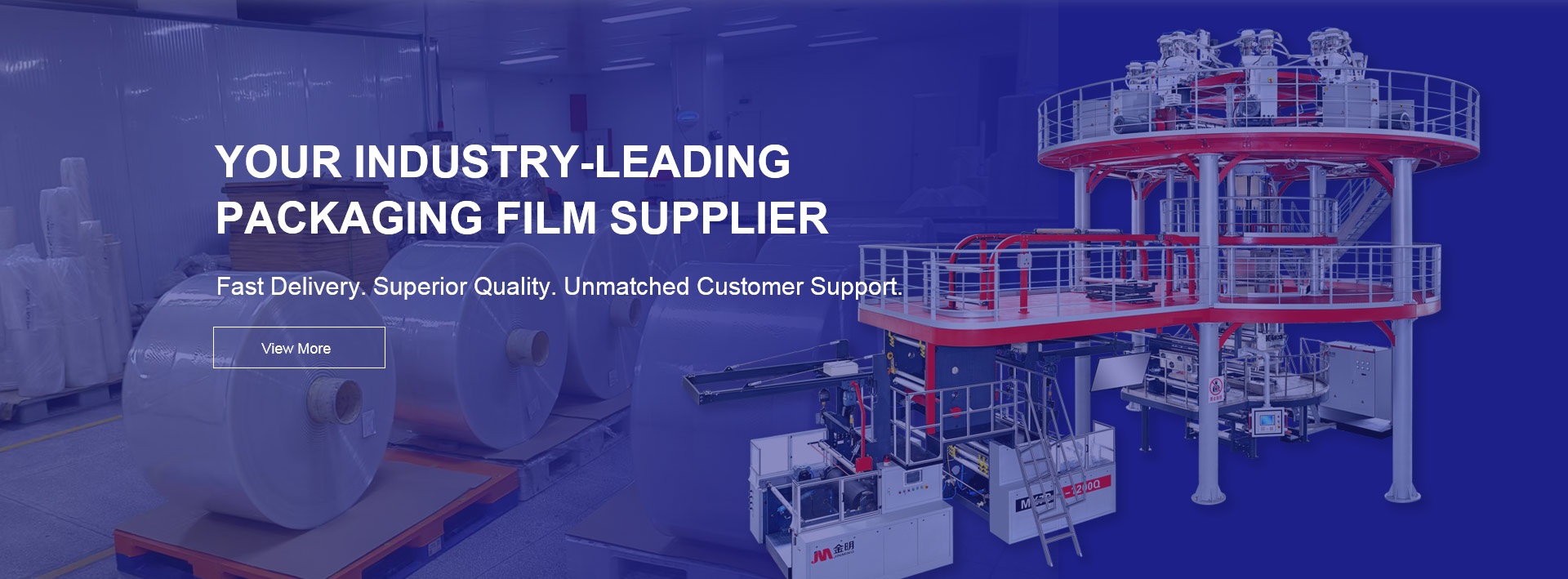
In the food industry, packaging films play a critical role. They protect food from moisture, oxygen, light and contaminants, preserve freshness, extend shelf life, and allow for attractive display. Choosing the right film requires balancing barrier performance, mechanical strength, sealability, clarity, cost, and regulatory compliance. Below we review the the main categories and types of Food Packaging Films, their features and common applications.
Food packaging films can broadly be divided by material type, orientation (cast or biaxial), single- vs multilayer structures, and special functional films (e.g. barrier, active, edible). Some common categories include:
Polyethylene (PE) Films
Polypropylene (PP) Films
Polyethylene Terephthalate (PET / BOPET)
Polyamide / Nylon (PA) Films
Ethylene Vinyl Alcohol (EVOH) Barrier Layers
Polyvinylidene Chloride / PVDC Films
Multilayer Laminates & Composite Films
Edible / Biodegradable Films
Special Types: Metallized films, Shrink films, Retort pouches
Each type has its own properties, advantages, limitations, and typical uses.
Polyethylene is one of the most used materials in food contact films because of its cost, flexibility, and ease of sealing.
Subtypes include:
Low-Density Polyethylene (LDPE): soft, flexible, good moisture barrier, heat sealable. Often used in inner layers of pouches, cling wraps, freezer bags.
Linear Low-Density Polyethylene (LLDPE): combines strength and flexibility; good puncture resistance. Widely used in stretch films, bags, pouches.
High-Density Polyethylene (HDPE): stiffer, higher strength, less flexible. Common in liners, heavier packaging, some rigid containers.
PE films are often used as sealant layers or inner layers in multilayer structures because their sealing properties are favorable.
PP films are valued for clarity, stiffness, heat resistance, and moderate barrier properties.
Common PP film types:
Biaxially Oriented Polypropylene (BOPP / OPP): stretched in two directions, giving good strength, gloss, dimensional stability, and printability. Often used as outer film in laminates or snack packaging.
Cast Polypropylene (CPP): produced by casting rather than orientation. It offers good seals, flexibility, and is often used as a sealant or intermediate layer in flexible pouches.
PP films perform well under heat (e.g. for sterilization) and are used in many food packaging forms including trays and pouches.
Polyethylene terephthalate (PET), especially in biaxially oriented form (BOPET), offers good mechanical strength, dimensional stability, clarity, and moderate barrier to gases and moisture.
BOPET (biaxially oriented): common in high-performance packaging and as outer film in laminates.
APET (amorphous PET): sometimes used for clarity and thermoforming.
PET films are suited for laminated structures, trays, and barrier applications in combination with other layers.
Nylon (PA) films offer high puncture resistance and decent gas barrier, especially for oxygen. They are often used in vacuum packaging, high-barrier laminates, and meat packaging.
One drawback is sensitivity to moisture: as humidity increases, barrier properties may degrade. That’s why PA often appears in multilayer laminates rather than alone.
EVOH is a specialized barrier polymer, excellent at blocking oxygen, aromas, and gas migration. It is often used as a middle layer in multilayer films.
Because EVOH is moisture sensitive, it must be sandwiched between moisture-resistant layers (such as PE or PP) to maintain performance. Its presence markedly enhances shelf life for sensitive food.
PVDC films (e.g. legacy “Saran” wrap) provide outstanding barrier to oxygen, moisture, and aromas.
However, because of cost, processing complexity, and environmental concerns, PVDC is often used in thin layers or replaced by alternative barrier films in multilayer laminates.
No single polymer can meet all requirements. Therefore many food packaging films are multilayer laminates—combining layers of PE, PP, PET, PA, EVOH, adhesive, aluminum foil, or even paper to tailor barrier, mechanical, and sealing properties.
Examples:
Film with PE + EVOH + PE
Film with BOPP outer + adhesive + sealant
Film with aluminum foil barrier + polymer layers
Retort pouches: metal-plastic laminate designed for thermal sterilization
These composites allow high performance across oxygen barrier, moisture barrier, mechanical strength, printability, and seal strength.
With increasing sustainability demands, edible films or biodegradable polymer films are gaining attention. Materials like starch, proteins, chitosan, cellulose derivatives, and various bio-polyesters are used to form thin films for wrapping or coating food.
These biodegradable films may have lower barrier or mechanical strength than conventional polymers, so often their use is limited to specific applications (e.g. fresh produce, inner liners) or as coatings rather than structural films.
Metallized Films: polymer films coated with a thin metal (e.g. aluminum) to boost barrier to light, oxygen. Frequently used in snack packaging.
Shrink Films / Heat-Shrinkable Films: films that shrink when heated, used for wrapping product bundles or shaped packaging.
Retort Pouches: sterilizable flexible packaging composed of high barrier laminates able to withstand high temperature and pressure.
Shrink Wrap / Stretch Wrap: though not always food-contact rated, these films are used for bundling, pallet wrapping. Stretch wrap often uses LLDPE.
When selecting food packaging film, the following factors must be weighed:
Barrier needs (oxygen, moisture, aroma)
Mechanical strength, puncture resistance
Sealability and heat resistance
Transparency, gloss, printability
Cost and processing ease
Regulatory compliance (food contact safety)
Recyclability, environmental impact
Often a multilayer film is the answer: combining a stiff outer layer, a barrier core, and a sealing inner layer yields optimized performance at lower cost.
Food packaging films span a wide variety of materials: PE (LDPE, LLDPE, HDPE), PP (BOPP, CPP), PET, PA, EVOH, PVDC, and many multilayer combinations. Each type brings distinct strengths—such as barrier, sealability, mechanical resistance, clarity—but also limitations. The ideal film often is a composite that balances performance, cost, processability, and sustainability.
If you're looking for a supplier or partner in high quality food-grade films or flexible packaging, JINBORUN is one such company in the field. Their offerings include specialized packaging films and they cater to diverse food packaging applications.
When choosing your film, match the material’s properties to your food’s sensitivity (moisture, oxygen, aroma), your packaging process (sealing temperature, machine speed), and your sustainability goals.